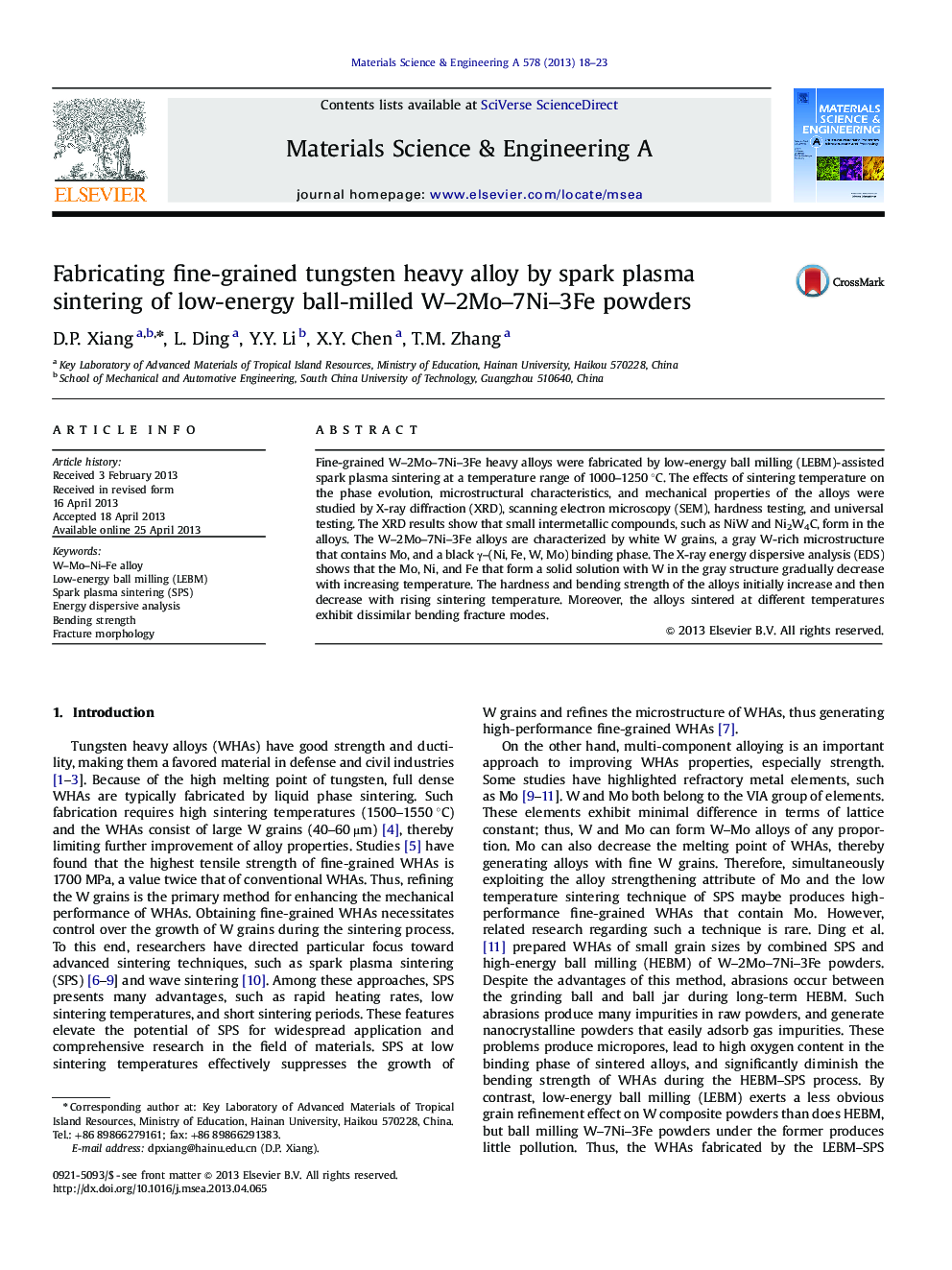| Article ID | Journal | Published Year | Pages | File Type |
|---|---|---|---|---|
| 1576082 | Materials Science and Engineering: A | 2013 | 6 Pages |
Abstract
Fine-grained W-2Mo-7Ni-3Fe heavy alloys were fabricated by low-energy ball milling (LEBM)-assisted spark plasma sintering at a temperature range of 1000-1250 °C. The effects of sintering temperature on the phase evolution, microstructural characteristics, and mechanical properties of the alloys were studied by X-ray diffraction (XRD), scanning electron microscopy (SEM), hardness testing, and universal testing. The XRD results show that small intermetallic compounds, such as NiW and Ni2W4C, form in the alloys. The W-2Mo-7Ni-3Fe alloys are characterized by white W grains, a gray W-rich microstructure that contains Mo, and a black γ-(Ni, Fe, W, Mo) binding phase. The X-ray energy dispersive analysis (EDS) shows that the Mo, Ni, and Fe that form a solid solution with W in the gray structure gradually decrease with increasing temperature. The hardness and bending strength of the alloys initially increase and then decrease with rising sintering temperature. Moreover, the alloys sintered at different temperatures exhibit dissimilar bending fracture modes.
Related Topics
Physical Sciences and Engineering
Materials Science
Materials Science (General)
Authors
D.P. Xiang, L. Ding, Y.Y. Li, X.Y. Chen, T.M. Zhang,
